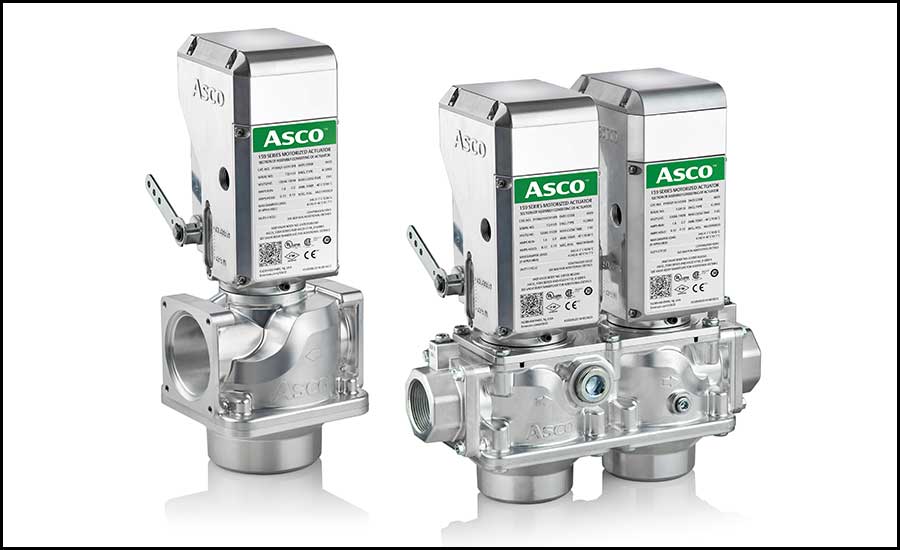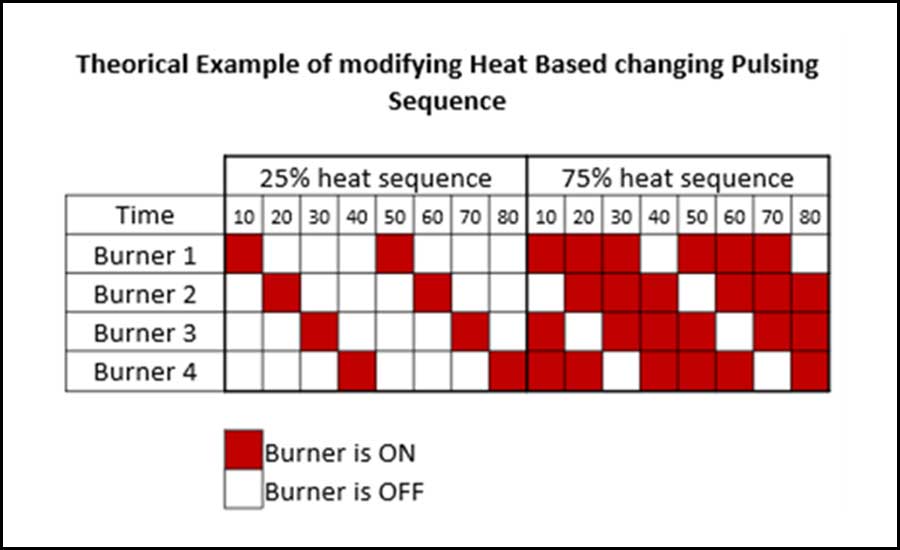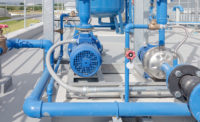HVAC systems are a critical part of the world’s built environment. They are also high-volume energy users and are identified as being significant contributors to greenhouse gas (GHG) emissions and climate change.
For example, a 2022 study by scientists at the National Renewable Energy Laboratory studying the impact of controlling humidity on GHG emissions calculated air conditioning to be responsible for the equivalent of 1.95 million tons of carbon dioxide released annually, or 3.94% of global GHG emissions.
As HVAC system manufacturers and users explore multiple avenues for improving overall equipment effectiveness (OEE) and minimizing GHG emissions from their systems, hydrogen presents a bold new opportunity — potentially providing the clean energy source the world needs for the future.
Transforming HVAC technology to incorporate hydrogen as a fuel and power source will require new investments in technology. This technology must be engineered and tested to deliver hydrogen safely and efficiently to residential, industrial, and commercial locations using HVAC systems.
Challenges of transitioning HVAC to hydrogen
HVAC systems rely heavily on fossil fuels — either directly via natural gas or through electric power from power plants that are still mostly fossil fuel-powered. This presents a basic infrastructure challenge for HVAC decarbonization efforts.
Natural gas (methane) is a significant contributor to global warming when it’s burned to provide heat or electricity, as well as when it leaks from production wells, pipelines, and storage systems.
Hydrogen can help the industry solve these challenges by reducing the carbon footprint with a clean energy source and generating zero carbon emissions when combusted. For example, during extreme temperatures, urban areas can see an uptick in the use of HVAC systems, which can stress local electric grids and increase the amount of GHGs that are released into the atmosphere. In addition, electric HVAC systems are prone to faulty breakers, overheating, and extended troubleshooting to solve issues.
Hydrogen also provides high efficiency, enabling reduced energy consumption and utility costs. Hydrogen fuel cells are more efficient than combustion-based power systems because of more direct conversion fuel energy to electrical energy. In this way, less fuel is used to do the same work.
Hydrogen is also a versatile and scalable fuel. Once it’s available in commercially significant quantities, hydrogen can be an effective fuel source for residential, commercial, and industrial HVAC applications.
Governments and private industries are expanding the renewable hydrogen infrastructure to reach net zero targets. For example, the U.S. Department of Energy (DOE) recently announced plans to launch multiple Regional Clean Hydrogen Hubs that “will kickstart a national network of clean hydrogen producers, consumers, and connective infrastructure to support the production, storage, delivery, and end use” of green hydrogen.
This will help accelerate green hydrogen growth as an alternative to “gray hydrogen,” typically produced via steam methane reforming (SMR) and releasing carbon dioxide in the process.
Fueling HVAC applications with hydrogen
Transitioning HVAC systems to hydrogen can help reduce the impact on global warming. To move this transition forward, a number of technical, operational, and safety challenges must be addressed.
No one solution exists to immediately and easily transform HVAC systems from dependence on GHGs to hydrogen. However, expanding hydrogen fuel cells to generate electricity for electric heat pumps is an HVAC technology with positive potential. Widely used in residential applications, electric heat pumps are also scalable for use in commercial buildings and industrial applications.
In many locations, power for these heat pumps comes from the grid, which is still heavily dependent on GHG fuel sources. Expanding hydrogen fuel cells can alleviate the strain on the electric power grid. Storing hydrogen and using it to power fuel cells when there are surges in grid demand may also be a more efficient solution compared to large-scale grid battery storage.
Hydrogen also offers significant potential as a clean-burning fuel to generate heat used in thermal water heating applications. Combusting hydrogen generates zero greenhouse gases (although the reaction does produce nitrous oxide, which is subject to emissions controls in many locations).
Hydrogen is also a more efficient system compared to traditional systems. High-efficiency fuel cells require less fuel to produce power. The energy produced by hydrogen combustion or hydrogen fuel cells can be utilized more effectively, resulting in reduced energy consumption and lower utility costs.
Hydrogen combustion combined with condensing technology can provide efficient thermal water heating. For example, there are companies that have developed residential tankless water heaters that can operate with up to 30% blending of hydrogen and natural gas.

Another firm is developing a residential fuel cell boiler, generating heat and electricity simultaneously to meet both space heating and hot water demands. This application can be effective for commercial and industrial applications, as well as residential, if properly and efficiently scaled.
Supplying both heat and electricity from one reaction without generating GHG emissions provides optimal energy utilization — from the most abundant element in the universe. Industrial-scale fuel cells can reduce demand on the electric power grid — which can be very useful for large commercial applications, such as data centers, semiconductor fabs, and factories.
Using hydrogen efficiently and safely
Even with the investments to expand green hydrogen production, hydrogen transport and storage is complicated. It’s difficult to use existing pipelines to move it from centralized electrolyzer sites to end-use locations, since the hydrogen molecule’s small size means it can leak up to four times more easily than natural gas.
In addition, hydrogen is a light, explosive element. If not handled properly, the potential for leakages leading to hazardous events needs to be carefully considered. As the hydrogen economy and infrastructure continues to evolve, stimulating end-use demand by transitioning HVAC systems to hydrogen as a fuel source can help justify investments in green hydrogen.

Safe and efficient use of hydrogen in boiler operations provides an effective use case for assessing the process and technical challenges for HVAC combustion applications. Making hydrogen boiler combustion as efficient as possible will maximize the heat output of the system while reducing nitrous oxide emissions that occur when burning hydrogen — significantly contributing to improving hydrogen-fueled HVAC system OEE.
To improve combustion efficiency, there are advantages to closely match the heat load in furnaces to the actual demand of the system. Frequent startups and shutdowns of burner systems lead to unnecessary fuel waste and excessive emissions. By installing valve systems with higher turndown ratios and flow factors, it’s possible to significantly reduce on/off cycles and increase fuel efficiency.
Implementing these valves makes good environmental sense, helps control fuel costs, and enables facilities to comply with increasing regulations, limiting nitrous oxide emissions.
Pulse firing for combustion efficiency
Pulse firing can provide a smarter and more sophisticated way to improve heat distribution in hydrogen-fueled HVAC heating equipment. It’s well-suited for multi-burner industrial furnaces.
Multiple burners are placed strategically on the equipment based on the anticipated heat demands. Rather than have all burners operate at the same flow rate to reach the desired heat levels, burners “pulse” intermittently in a highly controlled fashion, either by firing on and off or ranging between low- and high-fire sequences (see Figure 1). It’s another technique that, with the proper valve technology, helps maximize boiler OEE and efficient use of hydrogen fuel sources.
HVAC systems using hydrogen and seeking to gain the advantages of pulse firing need to properly select key components, such as safety shutoff valves, sensors, and controllers, to achieve the precise and safe hydrogen combustion that yields more sustainable combustion.
Major industry suppliers now offer motorized safety shutoff valves that can either stop the flow of fuel or provide high/low/off control to provide a range of flow rates. This new generation of safety shutoff valves has been engineered to provide optimized curvature, volumes, and capacities that support higher flow rates.
Higher flow rates allow for a higher turndown ratio, so burners in a pulse-firing configuration can operate with greater flexibility, generate greater heat output — reducing the number of burner shutdowns and restarts, and reach targeted goals of fuel consumption and emissions reduction.
In addition, these valves are tested and satisfy the EN161 standard for safely handling pure hydrogen gas, demonstrating zero leakage over three hours of use. The hydrogen molecule’s small size makes it easier for it to permeate solid metals, leading to hydrogen embrittlement and increasing the risk of leaks. That’s why it’s critical to select components like safety shutoff valves that are engineered and tested to provide reliable operation in hydrogen-fueled systems.
Opening a future for green hydrogen
HVAC systems are high-demand power users and contribute significant amounts of GHGs, and the industry is committed to finding new ways to reduce their carbon footprint.
Hydrogen can be the clean fuel the world needs for the future. It does, however, present technical challenges, such as low (although growing) availability, and material characteristics, such as higher leakage rates and embrittlement issues. As the hydrogen infrastructure is built out, it’s important to select hydrogen-specific technology that is 100% tested and certified to work with hydrogen.
HVAC systems powered by green hydrogen can generate demand that can help support investments in expanding the green hydrogen infrastructure. Working with a technology partner that has extensive experience driving the expansion of green hydrogen applications can help HVAC manufacturers solve technology and scale-up challenges and make green hydrogen a viable energy source.





